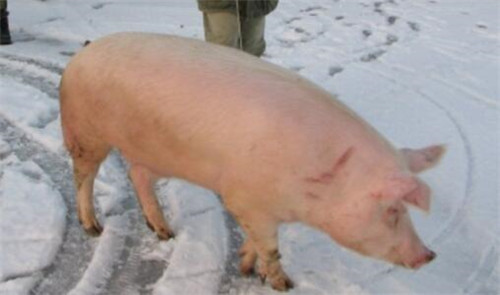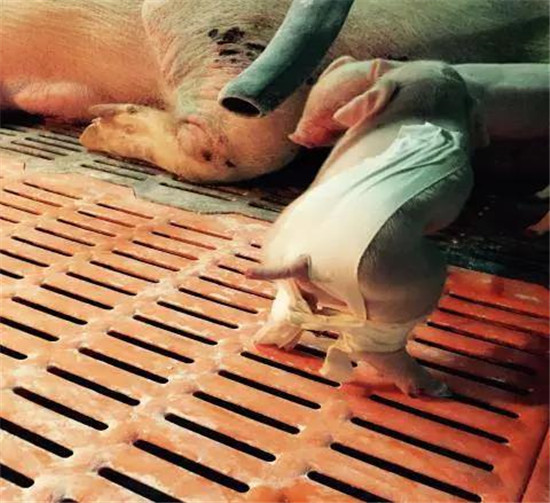What on earth is dermatitis? What are the clinical manifestations of pig dermatitis?
Dermatitis is a general term for skin inflammation or non-inflammatory lesions caused by a variety of internal and external infection or non-infectious factors. it is not an independent disease, but a variety of symptoms with complex etiology and clinical manifestations.
Dermatitis can be divided into the following three categories:
1. Infectious inflammatory dermatitis:
A, virus infection: foot-and-mouth disease blister, dermatitis nephritis syndrome; bacterial infection: streptococcal abscess, staphylococcosis.
B, spirochete infection: plum rash; fungal infection: beriberi; parasitic insect infection: scabies
2. Non-infectious inflammatory dermatitis:
A, allergic factors: contact dermatitis, drug dermatitis, etc.
B, papular squamous: psoriasis (psoriasis)
C. factors of neurological dysfunction: neurodermatitis, stress syndrome
D, vasculitis factors: allergic epilepsy
E, physical factors: pleomorphic solar eruption, corns
F, sebaceous gland secretory factors: seborrheic dermatitis, acne, rosacea
3. Non-inflammatory dermatitis
A, metabolic factors: skin amyloidosis, VA deficiency
B, genetic keratosis, verrucous limb keratosis, tuberous sclerosis
C, skin tumors: pigmented disease, hemangioma, lymphoreticular tissue tumor

The mechanism of dermatitis
Dermatitis is caused by the accumulation of certain metabolites, localized proliferation of epidermis or dermal cells, inflammatory edema and various cell infiltration.
1. Deposition of metabolites: such as skin amyloidosis (acne pimples), caused by amyloid deposition in the papillary layer of the dermis.
2. Localized hyperplasia of epidermis or dermis: such as dermatofibroma (corns, corns).
3. Dermatitis caused by inflammatory edema: seen in contact dermatitis (staphylococcosis).
4. Dermatitis caused by infiltration of various cells into the epidermis or dermis:
A, suppurative inflammatory dermatitis: neutrophil infiltration
B. Chronic inflammatory dermatitis: lymphocyte infiltration
C, allergic dermatitis: eosinophil infiltration
D, tuberculous papule: epithelioid lymphocyte infiltration
E, syphilitic papules: plasma cell infiltration
F, xanthomatosis: foam cell infiltration.
Clinical manifestations of dermatitis
It can be divided into acute stage, subacute stage and chronic stage.
1, acute stage: performance for erythema, edema, can be accompanied by papules, blisters or exudation.
The pathological manifestations were edema between epidermal cells, sponge formation and blister in the epidermis.
2. Subacute stage: blister, swelling and exudation decreased, scab and desquamation appeared.
3. Chronic stage: skin hypertrophy and leatherization, accompanied by pigmentation or hypopigmentation.
Pathological findings: epidermis thickening, spinous layer hypertrophy, dermal papilla lymphocyte infiltration.
There is often no obvious boundary between the three stages, some suffering from pigs can coexist at the same time, and some dermatitis do not have to go through three stages.
Five kinds of common clinical dermatitis that can be classified
1. Contact dermatitis: skin or mucous membrane contact with exogenous substances, inflammatory reaction occurs immediately at the contact site, showing erythema, swelling, papules, blisters and so on. Such as acid-base stimulation and so on.
2. Neurodermatitis (chronic lichen): severe pruritus or mossy-like lesions caused by cortical inhibition and excitation disorder, which are related to stress and emotion. Such as pig herd stress.
3. Drug-induced dermatitis (drug eruption): allergic reaction, diffuse, bright red spots or bright red papules.
4. Solar dermatitis: it is a delayed photoallergic disease induced by sunlight (medium and long wave ultraviolet), which can be divided into plaque type, eczema type, erythema type, prurigo type, urticaria type and so on.
5. Seborrheic dermatitis (white debris wind): red flakes begin, followed by oily scaly patches with severe exudation, thick scabs and bad smell. Such as staphylococci.
Clinically, those who have the characteristics of macula, papule, blister, plaque, erosion, scab or mossy can not be further classified as "eczema".
- Prev

Correction and treatment of eight-leg and intestinal hernia in delivery room piglets with medical tape (figure)
Correction and treatment of eight-leg and intestinal hernia in delivery room piglets with medical tape (figure)
- Next

How to solve the problem that sows do not eat food after delivery?
How to solve the problem that sows do not eat food after delivery?
Related
- On the eggshell is a badge full of pride. British Poultry Egg Market and Consumer observation
- British study: 72% of Britons are willing to buy native eggs raised by insects
- Guidelines for friendly egg production revised the increase of space in chicken sheds can not be forced to change feathers and lay eggs.
- Risk of delay in customs clearance Australia suspends lobster exports to China
- Pig semen-the Vector of virus Transmission (4)
- Pig semen-the Vector of virus Transmission (3)
- Five common causes of difficult control of classical swine fever in clinic and their countermeasures
- Foot-and-mouth disease is the most effective way to prevent it!
- PED is the number one killer of piglets and has to be guarded against in autumn and winter.
- What is "yellow fat pig"? Have you ever heard the pig collector talk about "yellow fat pig"?

